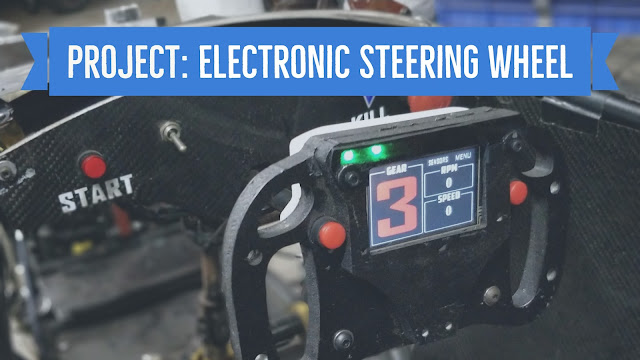Project: Electronic Steering Wheel

Hello everyone! In the blogpost below, I share one of my favourite projects, and that is the electronic steering wheel. I designed and developed the steering wheel for a formula student car. The function of the electronics on the wheel are to basically control several systems of the car like settings for radiator fan, drag reduction system and variable length intake manifold. To get a brief idea, first watch the video below and then continue with the post. The Setup The setup can be divided into 4 levels of hierarchy. Consider the diagram below: Arduino: The role of arduino in my setup is to receive input from the touch screen and gear shift buttons and accordingly deliver an output signal to control all the relays and servo. Steering wheel and actuators: Quick release electrical coupling: As far as the production of the steering wheel is concerned, this was undoubtedly the most difficult part of the entire setup. The male side of a round electrica...








